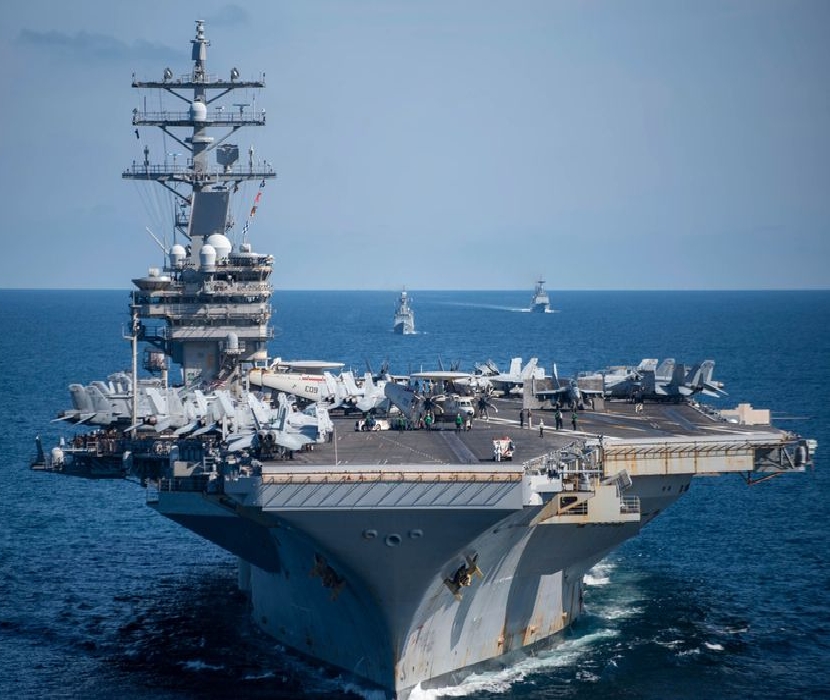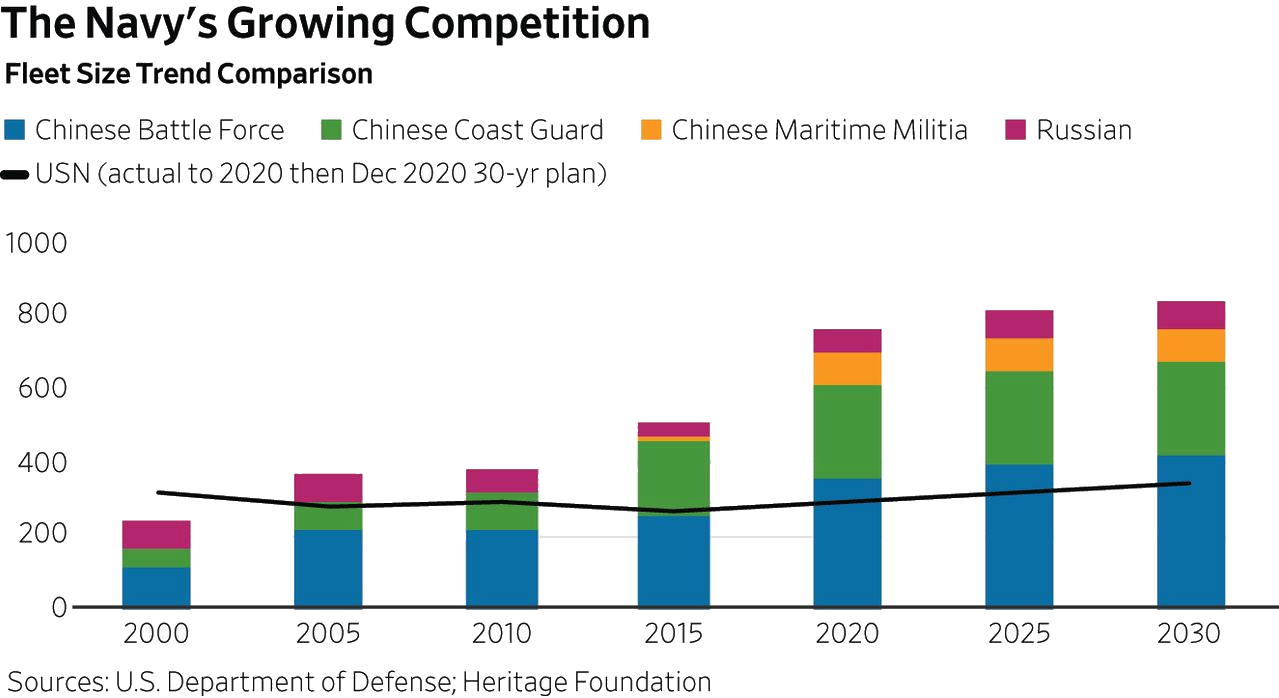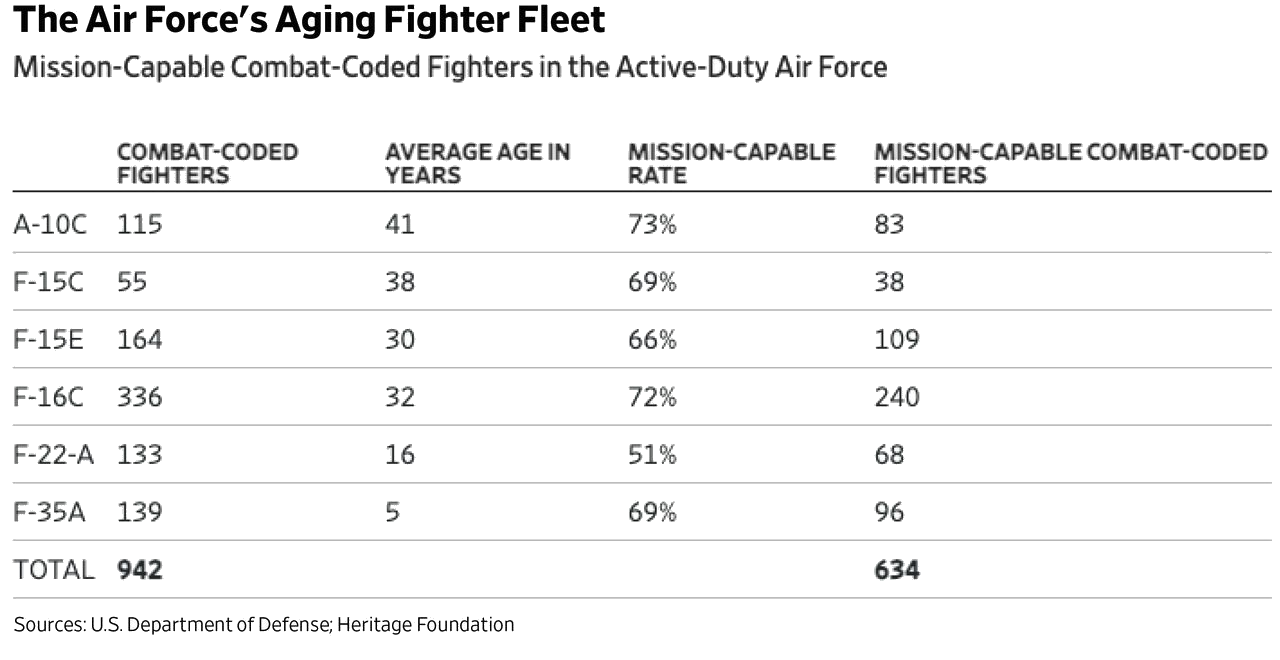The U.S. Military’s Growing Weakness
|
Military Runs on Pride and Poor Leaders
This is one game we can’t ever afford to lose. |

|
A new Heritage Foundation report warns about declining U.S. naval and air power The Editorial Board - WSJ
U.S. aircraft carrier USS Ronald Reagan participates with other U.S. and South Korean navy ships during the joint naval exercises between the United States and South Korea in waters off South Korea's eastern coast on Sept. 29, 2022.
Americans like to think their military is unbeatable if politicians wouldn’t get in the way. The truth is that U.S. hard power isn’t what it used to be. That’s the message of the Heritage Foundation’s 2023 Index of U.S. Military Strength, which is reported here for the first time and describes a worrisome trend.
Heritage rates the U.S. military as “weak” and “at growing risk of not being able to meet the demands of defending America’s vital national interests.” The weak rating, down from “marginal” a year earlier, is the first in the index’s nine-year history.
- - -
The index measures the military’s ability to prevail in two major regional conflicts at once—say, a conflict in the Middle East and a fight on the Korean peninsula. Americans might wish “that the world be a simpler, less threatening place,” as the report notes. But these commitments are part of U.S. national-security strategy.
Heritage says the U.S. military risks being unable to handle even “a single major regional conflict” as it also tries to deter rogues elsewhere. The Trump Administration’s one-time cash infusion has dried up. Pentagon budgets aren’t keeping up with inflation, and the branches are having to make trade-offs about whether to be modern, large, or ready to fight tonight. The decline is especially acute in the Navy and Air Force.
The Navy has been saying for years it needs to grow to at least 350 ships, plus more unmanned platforms. Yet the Navy has shown a “persistent inability to arrest and reverse the continued diminution of its fleet,” the report says. By one analysis it has under-delivered on shipbuilding plans by 10 ships a year on average over the past five years.
From 2005 to 2020, the U.S. fleet grew to 296 warships from 291, while China’s navy grew to 360 from 216. War isn’t won on numbers alone, but China is also narrowing the U.S. technological advantage in every area from aircraft carrier catapults to long-range missiles.

The Navy wants to build three Virginia-class submarines a year, and the U.S. still has an edge over Beijing in these fast-attack boats. But the shipbuilding industry has shrunk amid waning demand, and the Navy’s maintenance yards are overwhelmed. Maintenance delays and backlogs are the result of running the fleet too hard: On a typical day in June, roughly one-third of the 298-ship fleet was deployed, double the average of the Cold War.
It’s worse in the Air Force, which gets a “very weak” rating. Aging “aircraft and very poor pilot training and retention” have produced an Air Force that “would struggle greatly against a peer competitor,” Heritage says.
The fighter and bomber forces are contracting to about 40% of what America had in the 1980s. The service has been slowing its F-35 buys even as it needs modern planes to compensate for the smaller fleet. Aircraft have low mission-capable rates, roughly 50% for the F-22. Heritage says the Air Force has “abandoned even the illusion” that it is working toward an 80% aircraft readiness goal. Munitions inventories “probably would not support a peer-level fight that lasted more than a few weeks,” and replacements can take 24 to 36 months to arrive.

A pilot shortage “continues to plague the service,” and the “current generation of fighter pilots, those who have been actively flying for the past seven years, has never experienced a healthy rate of operational flying.” Fighter pilots flew a meager 10 hours a month on average in 2021, up from 8.7 in 2020 but still far below the 200 hours a year minimum needed to be proficient against a formidable opponent.
The story isn’t much better for the Army, which has lost $59 billion in buying power since 2018 due to flat budgets and inflation. The Army is shrinking not as a choice about priorities but because it can’t recruit enough soldiers—nearly 20,000 short in fiscal 2022.
The Marines scored better in the index as the only branch articulating and executing a plan to change, reorganizing for a war in the Pacific in a concept known as Force Design 2030. But the Marines are slimming down to a bare-bones 21 infantry battalions, from 27 as recently as 2011. Mission success for the Marines depends on a new amphibious ship that the Navy may not be able to deliver.
- - -
Some will call all this alarmist and ask why the Pentagon can’t do better on an $800 billion budget. The latter is a fair question and the answer requires procurement and other changes. But the U.S. will also have to spend more on defense if it wants to protect its interests and the homeland. The U.S. is spending about 3% of GDP now compared to 5%-6% in the 1980s. The Heritage report is a warning that you can’t deter war, much less win one, on the cheap.
China’s hypersonic missile test demonstrates the next major war will utilize cyber attacks and unmanned vehicles striking from afar. So far the Biden administration is ignoring the warning signs (10/21/21). Images: EPA/Shutterstock/Getty Images Composite: Mark Kelly
Other Related Articles from these pages:
‘The Big One Is Coming’ and the U.S. Military Isn’t Ready
How Obama and Biden Destroyed the Greatest Military the World Has Ever Seen
Critical Race Theory (CRT) Being Taught in Todays (& Lloyd Austin’s) Military